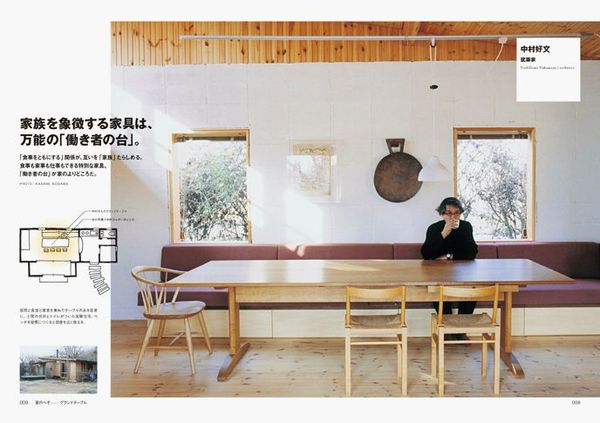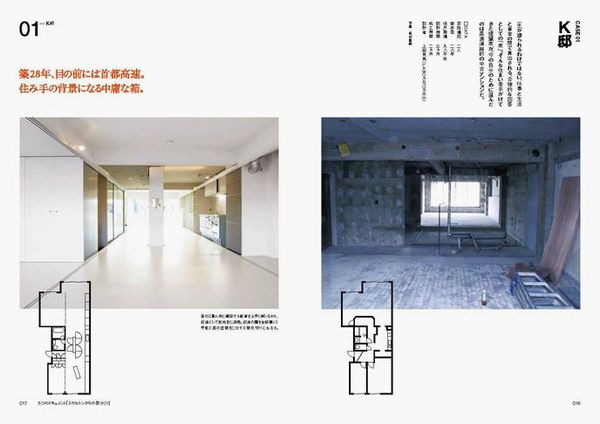무지 그래픽 디자이너 하라 켄야가 소개하는 공간. 글쎄 굉장히 단순하고 별거 아닌데,
무지 그래픽 디자이너 하라 켄야가 소개하는 공간. 글쎄 굉장히 단순하고 별거 아닌데, 이렇게 드로잉과 함께보니까 뭔가 재밌는 느낌이다. 언젠가 건물을 짓게되면 이런식으로 책을 - 자비로라도 - 내면 재밌겠다 - 라는 생각이 든다. 심플하지만 유머가 있는 공간이 좋다.
The house is like the fruit that becomes the tree growing in the soil of our desire for living. If you want good fruit, it's more important to take care of the tree than of the fruit itself, and even more important to fertilize the soil in which the tree stands. I think the economic and cultural sphere that is the soil of contemporary Japan is pretty fertile. Today, the supersonic growth has passed, the expanding economic development has slowed, and we are no longer manipulated by steeply rising land prices. Naturally we turn our attention to satisfaction in our daily lives. Rising economic prosperity brought us more opportunities to go abroad, but as people experience more contact with outside cultures, they become more conscious of the values and idiosyncrasies of their own countries. Naturally Japanese people have begun to recognize the dormant resource of the aesthetics at their very feet. There is a sensibility in Japan that shies away from attachment to a house in which one spends his life in this ephemeral world, which, in Buddhist terms, passes in an instant that is equivalent to 1/75th of a second. However, that is the very reason for the blossoming of our unique aesthetics. We want to see the Japan that blooms next.
Once, the architecture of Japan was rich and fertile. Not limited to Katsura Rikyu, [Katsura Imperial Villa], by which the German architect Bruno Taut was moved to tears, saying that it had attained the height of perfection, traditional Japanese architecture had beauty and dignity. The form of fusuma [opaque sliding screens] and shoji [translucent sliding screens] was determined more by the ordering of the body, that is, the way in which one opens and closes them, the mannered carriage of standing, walking and sitting on the tatami-mat floor, than by the ordering of the space. They certainly didn't come about in response to loose corporal needs. They are one with a mentality that lives in a space that allows one to engage with the world with beauty and modest dignity. What moved Taut was the simplicity and humility uniting mentality and architecture. It is this cultural sustenance that is behind the contributions of Japanese architecture and design to the global context. Today, real estate development, having metamorphosed into a financial business based on rising land prices, has finally begun to shift from determining house value based on land value to determining it based on the quality of the residence.
In order to preserve traditional industries, say Japanese lacquer, appealing lacquer ware pieces have to be developed. But suppose such a piece is sold capriciously, carried home and put on a table littered with remote controls, and a toppled teddy bear; it will make no impression at all. The distinct existence of a table empty of objects is the prerequisite for the beauty of a piece of lacquer ware. The same is true of ceramics, kimono and even ultramodern products. Some electric appliances and high-tech equipment will be gradually incorporated into a house. Air conditioners, televisions and lighting will be installed in walls or ceilings. Whether tradition, high technology or design, they all arrive at the same place: house.
The Meiji era (1868-1912) is distant history. As is the postwar period. Now it's the Great East Japan Earthquake. This momentous punctuation is an opportunity to change something. So we want to consider houses in Japan. We plan to create something that will make the world say, "Have you seen those Japanese houses?" We will deliberate with a panoramic vision, working with the national government, energy companies and a wide variety of industries.















/http%3A%2F%2Fstorage.canalblog.com%2F70%2F15%2F680409%2F80888084_o.jpg)
/http%3A%2F%2Fstorage.canalblog.com%2F57%2F70%2F680409%2F49362920_o.jpg)
/https%3A%2F%2Fstorage.canalblog.com%2F73%2F21%2F680409%2F80893517_o.jpg)
/https%3A%2F%2Fstorage.canalblog.com%2F63%2F09%2F680409%2F80891626_o.jpg)
/https%3A%2F%2Fprofilepics.canalblog.com%2Fprofilepics%2F5%2F8%2F585329.jpg)
/https%3A%2F%2Fassets.over-blog.com%2Ft%2Fcedistic%2Fcamera.png)